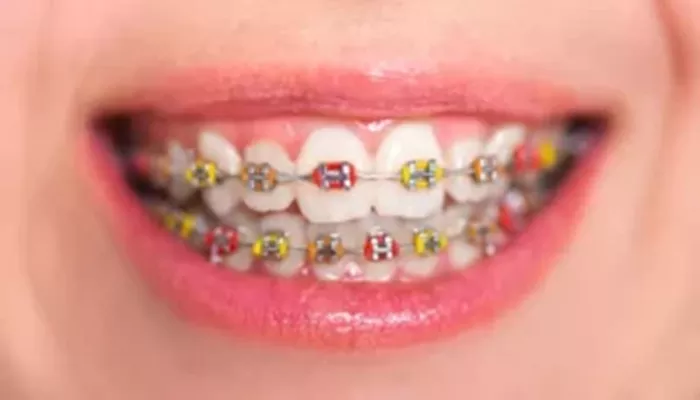Orthodontics, a specialized branch of dentistry, deals with the alignment of teeth and jaws to improve dental health and facial aesthetics. One common concern among patients seeking orthodontic treatment is facial asymmetry, where the left and right sides of the face do not match perfectly. This guide aims to provide a comprehensive understanding of whether braces can repair asymmetrical faces, exploring the underlying causes of asymmetry, the role of braces in addressing these issues, and the limitations of orthodontic treatment.
Understanding Facial Asymmetry
Facial asymmetry is a common phenomenon, present in varying degrees in most individuals. It can be caused by a combination of genetic, developmental, and environmental factors. Some of the common causes include:
Genetic Factors: Asymmetry can be inherited from parents, with certain facial features being more pronounced on one side.
Developmental Issues: Conditions such as cleft lip and palate, craniofacial syndromes, or congenital malformations can lead to asymmetrical facial development.
Trauma and Injury: Facial injuries, including those to the jaw, can result in asymmetry as the healing process may not restore perfect symmetry.
Habitual Factors: Habits like chewing on one side of the mouth, sleeping on one side, or holding a phone to one ear can contribute to gradual facial asymmetry over time.
Growth Discrepancies: As children grow, there can be discrepancies in the growth of the jaws and facial bones, leading to asymmetry.
Assessing Facial Asymmetry
Before considering treatment, it’s crucial to assess the degree and cause of facial asymmetry. This involves a thorough examination by an orthodontist, who will evaluate the patient’s dental and facial structures, including the teeth, jaws, and soft tissues. Diagnostic tools such as x-rays, photographs, and 3D scans may be used to create a detailed picture of the facial asymmetry.
The assessment will help determine if the asymmetry is primarily dental (related to tooth position) or skeletal (related to jaw bone structure). Dental asymmetry can often be corrected with braces, while skeletal asymmetry may require more complex treatment, including jaw surgery (orthognathic surgery).
Role of Braces in Correcting Asymmetry
Braces are primarily designed to align teeth and improve bite function. However, they can also have a significant impact on facial symmetry, particularly when the asymmetry is primarily dental in nature. Here’s how braces can help:
Aligning Crooked Teeth: Crooked teeth can create an uneven appearance, making the face look asymmetrical. By straightening teeth, braces can improve the overall symmetry of the smile and facial appearance.
Correcting Midline Discrepancies: The midline of the upper and lower teeth should ideally align. When they don’t, it can create a noticeable asymmetry. Braces can adjust tooth position to align the midlines, enhancing facial symmetry.
Balancing Tooth Size and Shape: Sometimes, asymmetry arises due to discrepancies in tooth size or shape. While braces cannot change the actual size of teeth, they can redistribute spaces and create a more balanced appearance by moving teeth into ideal positions.
Improving Bite Function: An improper bite (malocclusion) can affect facial symmetry by putting uneven pressure on the jaws. Braces can correct malocclusion, distributing bite forces more evenly and potentially improving facial symmetry.
Limitations of Orthodontic Treatment
While braces can make significant improvements in dental asymmetry, they have limitations when it comes to skeletal asymmetry. Here are some important considerations:
Skeletal Asymmetry: If the asymmetry is primarily due to skeletal issues, such as an uneven jaw bone structure, braces alone may not be sufficient. In these cases, orthognathic surgery may be required to correct the underlying skeletal problem.
Age Factor: The effectiveness of braces in correcting asymmetry can vary based on the patient’s age. Younger patients, whose jaws are still growing, may have better results with orthodontic treatment alone. Adults with fully developed jaws may need more comprehensive treatment plans, including surgery.
Soft Tissue Changes: Facial asymmetry can also involve soft tissues, such as muscles and fat pads. Braces can improve dental alignment, but they cannot directly change the shape or volume of soft tissues. In some cases, additional treatments like facial fillers or surgery may be considered.
Patient Compliance: The success of orthodontic treatment depends on patient compliance. Proper care and maintenance of braces, regular appointments with the orthodontist, and following instructions are crucial for achieving optimal results.
Treatment Planning for Asymmetry
When addressing facial asymmetry with braces, a customized treatment plan is essential. The orthodontist will consider the patient’s age, the cause and degree of asymmetry, and their overall dental and facial health. The treatment plan may include:
Orthodontic Therapy: Braces or Invisalign may be used to align teeth and correct bite issues. Depending on the severity of the asymmetry, the treatment may involve traditional metal braces, ceramic braces, or lingual braces (placed on the back of the teeth).
Orthognathic Surgery: For patients with skeletal asymmetry, orthognathic surgery may be recommended in combination with orthodontic treatment. This involves repositioning the jaws to improve function and aesthetics.
Adjunctive Therapies: In some cases, additional treatments may be necessary to address soft tissue asymmetry. This can include dermal fillers, facial exercises, or laser treatments.
Conclusion
Facial asymmetry is a common concern that can affect one’s self-esteem and overall appearance. While braces alone may not be able to address all types of asymmetry, they can make significant improvements in dental alignment and bite function, which can indirectly enhance facial symmetry. For patients with skeletal asymmetry, a combination of orthodontic treatment and orthognathic surgery may be required.
Related topics:

